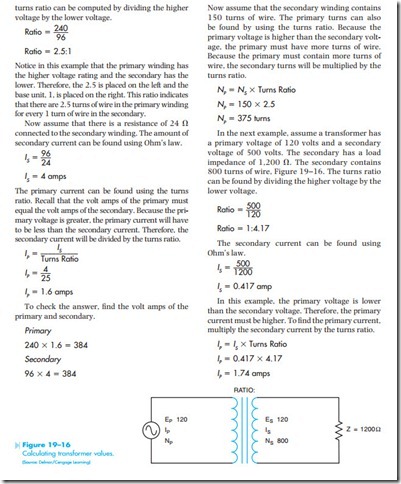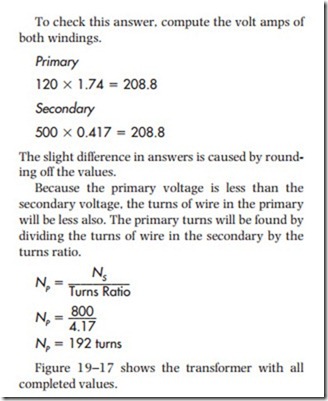CALCULATING TRANSFORMER VALUES USING THE TURNS RATIO
As illustrated in the previous examples, transformer values of voltage, current, and turns can be computed using formulas. It is also possible to compute these same values using the turns ratio. There are several ways in which turns ratios can be expressed. One method is to use a whole number value such as 13:5 or 6:21. The first ratio indicates that one winding has 13 turns of wire for every 5 turns of wire in the other winding. The second ratio indicates that there are 6 turns of wire in one winding for every 21 turns in the other.
A second method is to use the number 1 as a base. When using this method, the number 1 is always assigned to the winding with the lowest volt- age rating. The ratio is found by dividing the higher voltage by the lower voltage. The number on the left side of the ratio represents the primary winding, and the number on the right of the ratio represents the secondary winding. For example, assume a transformer has a primary rated at 240 volts and a secondary rated at 96 volts, Figure 19–15. The
turns ratio can be computed by dividing the higher voltage by the lower voltage.
To check this answer, compute the volt amps of both windings.



